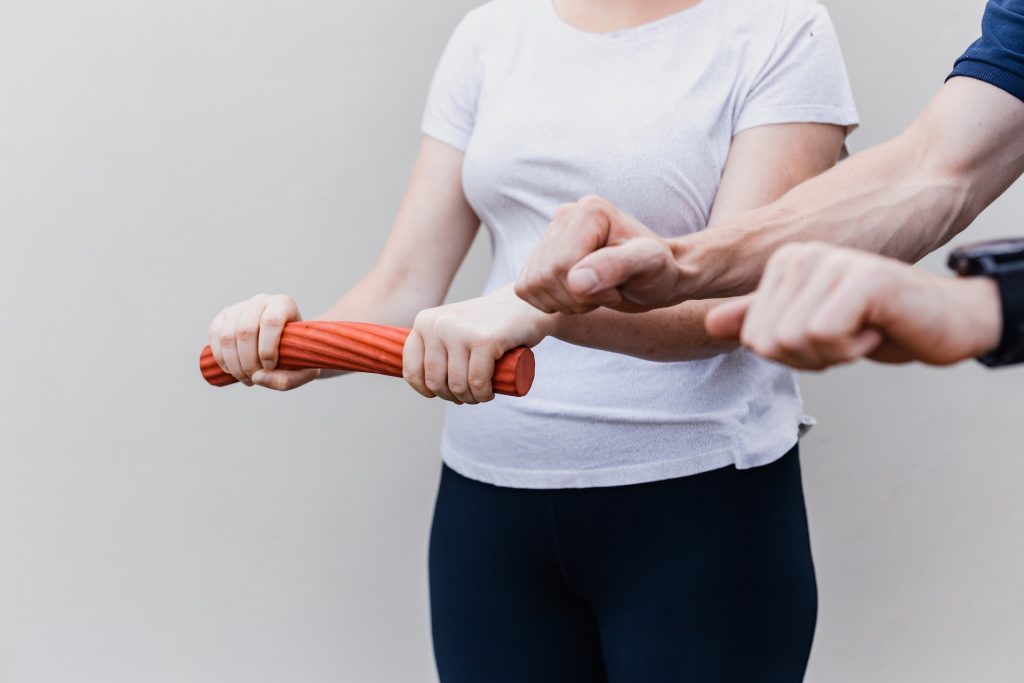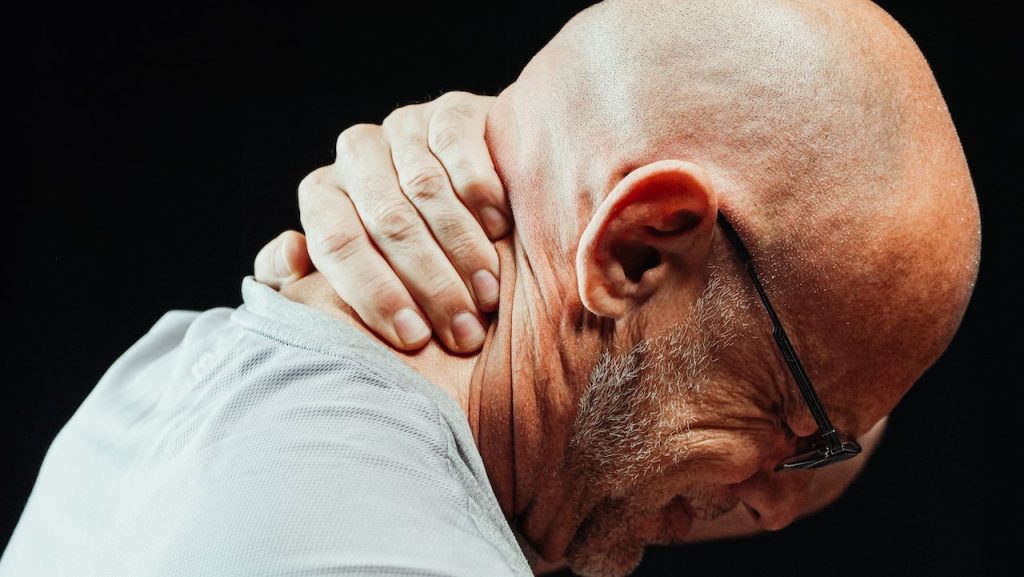A National Health Interview Survey showed that about 20.4 percent of American adults experienced chronic pain in 2019. About 7.4 percent of adults who experienced chronic pain limited their activities in the past three months.
The survey also showed that chronic pain increases as people age. Adults aged 65 years and above had the highest incidence of the medical issue. Its incidence also increased among rural dwellers. To know how to manage pain, you should first understand the definition of chronic pain.
Definition: Chronic Pain
Chronic pain is pain lasting for more than three months. It can also be defined as persistent pain occurring more than the expected healing time. This complex condition can affect any body part and may interfere with everyday activities.
The pain intensity for one person can be different from the experience of another person. Classification of chronic pain can range from mild to severe, and it is experienced on most days. But it’s essential to have chronic pain diagnosed to determine the underlying cause and to develop an effective way to treat chronic pain.
Causes of Chronic Pain
There are different causes of chronic pain. Some people may experience it due to underlying bone, muscle, or joint pain. Others may have pain from cancer or another illness. Stress can also cause chronic pain in some cases.
Several factors can contribute to developing a chronic pain condition, including genetics, injury, surgery and hormonal changes. For example, women are more likely to experience chronic pain during pregnancy, after birth, or during menopause.
When a person experiences chronic pain, the nerves that transmit signals to the brain might be more sensitive to pain than usual. Sufferers might also have changes in their brains that make them perceive pain signals more strongly than they usually would.
Many conditions can cause chronic pain, including arthritis, fibromyalgia, nerve damage from an injury or surgery, and cancer. People may experience chronic pain when their immune system is overactive or malfunctions and causes inflammation.
In many cases, chronic pain is related to stress. Depression, anxiety, or other mental health conditions are common among people with chronic pain. This may be due to the effects of these disorders on the central nervous system or brain.
World Mental Health Surveys also showed that childhood adversities are associated with adult-onset pain disorders, including chronic headaches and neck or back pain.
Although there is no cure for chronic pain, several different treatments can help to manage it. These include pain medication, physical therapy and complementary therapies such as massage or acupuncture.
Difference Between Chronic Pain and Acute Pain

Acute pain and chronic pain are two different types of pain. Acute pain is present for a short time and goes away on its own, while chronic pain lasts longer than six months and may interfere with one’s daily life.
Another difference between the two types of pain is how they are triggered in the nervous system. Specific stimuli can trigger acute pain, including touching a hot stove or dental work. Surgery or tissue trauma can also cause acute pain. On the other hand, chronic pain may be triggered by something that has nothing to do with potential injury.
For example, someone with arthritis may experience chronic pain even when not engaging in activities that could cause an injury.
While acute pain serves a useful purpose in informing people of harmful situations and prompting them to take care of themselves, chronic widespread pain does not have the same function. People who experience chronic pain syndromes may have persistent, throbbing headaches. They also experience low back pain, cancer pain, arthritis pain, neurogenic pain, or psychogenic pain.
People who develop chronic pain may be more susceptible to mental disorders like depression and anxiety. They may also experience sleep disturbances. Medications can help treat some of these symptoms and relieve chronic pain.
Medical Conditions Associated with Chronic Pain
Conditions

Several medical conditions are associated with chronic pain. Some of these conditions include arthritis, fibromyalgia and spinal cord compression.
Arthritis
Arthritis is a condition that affects the joints, causing pain and inflammation. There are many different types of arthritis, each with its symptoms. Osteoarthritis is among the most common type of arthritis. The condition occurs after the wearing down of the cartilage cushioning the joints. Rheumatoid arthritis is a type of arthritis that occurs when the body’s immune system attacks the joints.
Fibromyalgia
Fibromyalgia is a condition that causes pain in the muscles and soft tissues. The cause of fibromyalgia is unknown, but it is thought to be related to changes in how the brain processes pain signals. Fibromyalgia often co-exists with other conditions, such as irritable bowel syndrome and chronic fatigue syndrome.
Spinal cord compression
Spinal cord compression is a condition in which there is pressure on the spinal cord, causing pain, numbness, and weakness in the arms and legs. The most common cause of spinal cord compression is a herniated disk, which can cause bone tumors, infection, or spinal stenosis.
Chronic Neuropathic Pain
Chronic neuropathic pain is a type of pain that results from nerve damage or a malfunctioning nervous system. It is often described as shooting, burning pain and can come and go or be unrelenting and severe. One example is phantom limb syndrome. A person experiences this condition when a limb has been removed due to illness or injury.
Definite neuropathic pain is a serious condition that can be debilitating and impact the quality of life. Chronic neuropathic pain requires treatment to help manage it. Some treatment options include medications, physical therapy, nerve blocks, and surgery.
Chronic Musculoskeletal Pain
Chronic musculoskeletal pain is a complicated condition that negatively affects many people worldwide. More specifically, up to 45 percent of adults are estimated to have long-lasting musculoskeletal pain that requires medical intervention and attention.
Several contributing factors are associated with chronic musculoskeletal pain, including poor posture, injuries or accidents, overuse of muscles, and repetitive strain. Some people experience additional complications, such as significant emotional distress or sleep disturbances, that can exacerbate their pain and make it more difficult to manage.
Chronic Visceral Pain
Chronic visceral pain lasts more than six months in the body’s internal organs. It may feel like a deep ache or pressure and can often be accompanied by other symptoms, such as nausea and vomiting, sweating, fatigue, depression and changes in appetite. Though chronic visceral pain affects millions of people worldwide, it is poorly understood and remains one of the most difficult to treat.
Modifying the diet and activity is effective in dealing with the condition, especially if it’s associated with gastrointestinal pain. Major contributors to pain include foods high in fat or spice and excessive physical activity. Eating smaller and more frequent meals may help manage symptoms and make it easier to avoid specific food triggers.
Pain Management

Managing pain is crucial to maintaining one’s overall health and well-being. It reduces the risk of making the pain worse. Many strategies can effectively manage pain, including pain medicine, physical therapy, psychological therapy, mind and body technique and community support group.
For many people with chronic pain, these approaches can play an essential role in helping to alleviate the symptoms and improve the overall quality of life. If you’re interested in trying one or more of these strategies, consult your doctor or another medical professional to determine the best approaches for your unique situation.
With the right combination of treatment approaches, you can find relief from your pain and begin to enjoy the things you love again.
Pain Relief Using Medicine
It’s crucial to have chronic pain treated. Medicines can help relieve pain caused by a range of conditions and illnesses. Several pain treatment medicines are available, each with its benefits and side effects.
Here are some of the most commonly used pain medicines:
- Paracetamol – These are the most commonly used pain relievers. People can buy them over-the-counter at pharmacies. They act quickly to relieve mild to moderate pain, but their effects only last for a short time.
- Aspirin – Aspirins reduce inflammation in the body and block prostaglandins, chemicals produced by the body that cause pain and inflammation. Aspirin is ideal for people suffering from period cramps or chronic headaches.
- Non-steroidal anti-inflammatory drugs (NSAIDs) – These medicines also reduce inflammation and block prostaglandins, but NSAIDs act more quickly than aspirin. Some of the most commonly used NSAIDs include ibuprofen and naproxen. People can buy them over the counter at pharmacies. However, these medicines should only be used short-term, as they can cause side effects like stomach ulcers if taken for prolonged periods.
- Opioid medicines – These powerful pain relievers are typically reserved for severe or chronic cancer-related pain. They bind to opioid receptors in the brain and spinal cord and block neurotransmitters that carry pain signals between nerve cells. The most commonly used opioid medicines include codeine, morphine, and oxycodone. When opioids are prescribed, it’s essential to use them with caution, as they can cause significant side effects like nausea and breathing problems. Overusing these pain relievers can also lead to opioid addiction if they’re not used safely.
- Local anesthetics – People use these medicines to treat nerve pain caused by surgery or an injury. Local anesthetics work by blocking the transmission of pain signals along nerve fibers. They are available in several forms, including drops, sprays, creams and injections.
Pain Relief Without Medicines
Chronic pain diagnoses do not always require medicines to relieve pain. Several non-medicine options can be just as effective to treat pain, increasing your mobility and improving your mood.
- Heat or cold therapy – Applying an ice pack to a recent injury can help reduce swelling. On the other hand, heat packs are often more effective for chronic muscle and joint pain.
- Physical therapy – Exercising regularly can be one of the most useful non-medicine methods for treating pain. This may include walking, stretching, strengthening exercises, or aerobic exercises.
- Massage therapy – Massage therapy can also be beneficial, especially for soft tissue injuries such as sprains and strains.
- Relaxation and stress management technique – Practicing meditation or yoga can help to alleviate chronic pain symptoms by reducing stress levels and promoting relaxation. Other techniques, such as deep breathing or guided imagery, may help manage your pain without needing medications.
- Cognitive behavior therapy (CBT) – You can learn how to change your thoughts and react to your pain using CBT. This can allow you to manage symptoms better and avoid triggers that may worsen your pain.
- Acupuncture – Acupuncture involves inserting thin needles into specific points on the body. It is one of the oldest and most traditional forms of pain relief and is effective in some cases.
Chronic pain significantly affects the daily life of the person experiencing it. The condition can cause a chronic headache or sore joints that never seem to disappear. The pain severity may differ from one person to another. Although many medicines can help manage this pain, other non-medicine methods can be just as effective. Overall, working closely with your doctor and discussing all available treatment options is crucial to find the best pain relief method.


